ESS SL - Semester 1 Term 1 - 1.1-1.5
1/113
There's no tags or description
Looks like no tags are added yet.
Name | Mastery | Learn | Test | Matching | Spaced |
|---|
No study sessions yet.
114 Terms
What’s an Environmental Value System (EVS)?
It’s a worldview, that shape how individuals and groups approach environmental issues.
What’s a system?
Organized collection of interdependent components that perform a function and are connectod through transfer of energy and matter.
What're System Diagrams?
It is a system, that consists of storages (boxes), flows (arrows), inputs, and outputs.
What’s an Input?
Things that enters the system
What’s an Output?
Things coming out of the system
What are the 3 types of EVS?
Econcentric, Anthropocentric, and Technocentric.
What is Ecocentrism?
Environmental conservation is central to decision-making. Humans are part of nature and not more important than other species. It believes in individual responsibility and accountability. All life has inherent value. We should use resources sustainably.
What’s Anthropocentrism?
Environment is a source for humans to use as needed. Human health, and well-being are central for decision making. Humans are most important species. People that hold these views usually live in MEDC’s (More Economically Developed Countries).
What’s Technocentrism?
Nature is a model, and it can be replaced. Economic development, and growth is central to decision making. Technology can provide solutions to environmental issues. We can solve the issues we caused. Economic growth is good.
Extreme Econcetrics are known as?
Deep Ecologists (Nature is more important, than humans). Humans should consume less. Seek a holistic view of the world. Everyone should be involved in making decisions regarding the environment.
Soft Reliance are known as?
Soft Ecologists (Individuals make a difference). Against large scale profits, because they prefer small scale/ local markets.
Who are Environmental Managers?
Professionals responsible for overseeing and implementing policies, programs, and practices that aim to protect and sustain the environment
What are the Characteristics of Environmental Managers?
Current economic growth can be sustained if environmental issues are managed by legal means.
Environment can be used, if managed properly.
No radical political agenda, but promote working to create change within social, and political structures.
Extreme Technocentric is known as?
Cornucopians; Humans are more important, than nature.
What are the Characteristics of Cornucopians?
Growth and Capitalism is the way to manage free-market economy.
Doesn’t care about the environment.
New resources and technology will solve environmental issues.
What’s the connection between Capitalism and the Environment?
Capitalists, believe that economic growth is put above all factors and this growth comes above environmental values. Private businesses are to blame for environment degradation.
What’s the connection between Communism and the Environment
Although these societies are meant to distribute wealth equally, most of these countries are victim of “tragedy of the commons”. When no one owns the resources no one cares for it.
What’s the ‘Tragedy of the Commons’?
Individuals, acting in their self-interest, deplete shared resources, leading to the overall detriment of the group.
What are the similarities of Capitalistic and Communistic EVS?
Its difficult for both to restrict environmental abuse since they emphasize short-term efficiency and profits whilst ignoring long-term consequences.
What are the differences of Capitalistic and Communistic EVS?
Both differ in economic principles that ties back to its environmental values.
Capitalism based in private businesses, as for socialism its based in government-owned businesses.
Capitalism allows free speech and greater environmental awareness compared to communism.
What are Common Native American EVS’s?
They live in a community and share property.
They use low-impact technology.
Laws are passed on by oral tradition.
Small population densities.
What are the similarities of Christianity and Islam EVS’s?
Separation of spirit and matter.
God is the creator of the universe.
The idea of “dominion” over the earth.
Earth is a gift to humans as caretakers.
The animal world is a community equal to humans.
What are Buddhist’s EVS?
All living things are dependent to each other.
Humans are no more important than other living things
Living in harmony with nature is crucial.
What’s a Reductionist Approach?
Looking at individual parts.
What’s a Holistic Approach?
Looking at how everything works together.
What are Examples of a system?
Universe
Earth
Rainforests
What are the 3 types of Systems?
Open system
Closed system
Isolated system
What’s an Open System?
The system exchanges matter and energy with its surroundings (eg. ecosystem).
What’s a Closed System?
The system exchanges energy, but not matter (eg. Biosphere II, experiment attempt to model this).
What’s Biosphere II?
Scientific experiment in the 1990s. Simulated a closed ecological system to study Earth's ecosystems. Included various biomes (rainforests, deserts) inside a large structure. A group of people lived inside to test if the system could sustain itself. In the end the CO2 levels were elevated and many say it was a failed experiment.
What’s an isolated system?
The system neither exchange with matter or energy. This doesn’t exist. But we can consider the universe as an isolated system (sometimes).
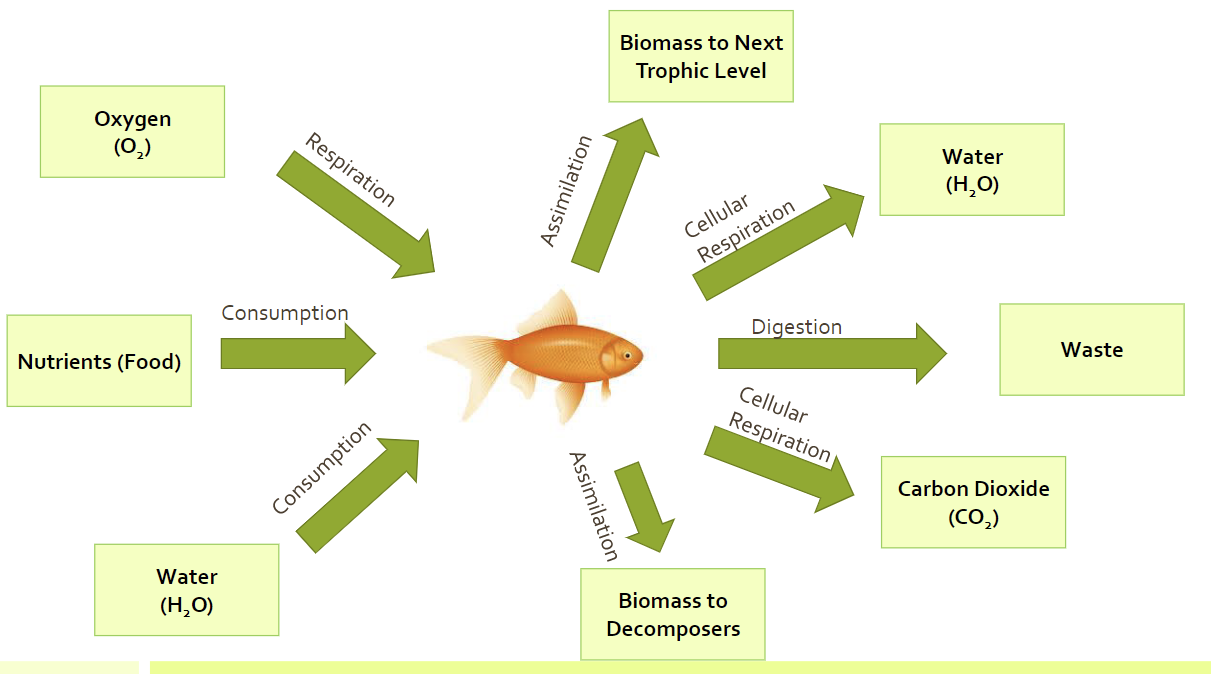
What’s the purpose of System Diagrams?
Visually represent a system
What’s Transfer?
Matter, and energy flowing through a system without changing form or state.
Transfer usually involve what?
A change of location.
What are examples of Transfer?
Food chain
Water carried to the ocean
Ocean current
What’s transformation?
Matter, and energy flowing through a system whilst changing form or state
Transformation leads to?
Interaction within a system in the formation of a new end product or involves a change of state.
What are examples of transformations?
Burning of fossil fuels
Water evaporating off the earth’s surface
Light energy to electrical energy in a solar panel
What are the benefits of models?
Show concepts on a scale that’s manageable.
Simplify complex systems.
Allow us to make predictions of future events.
Allow us to look at different scenarios so that we can look at the impacts to different changes in the system.
Allow us to discuss with experts.
What are the possible problems with models?
When oversimplified it could lose accuracy.
It depends on the skills and experience of people making them.
Interpreted differently
Different models of same system can predict different outcomes.
Data may be inaccurate so models could be used to manipulate for financial or political gain.
What’s a societal system?
Value Systems
Economic Systems
Social Systems
What’s earth as a system?
The biosphere
Atmosphere
Hydrosphere
Lithosphere
What does a system look like?
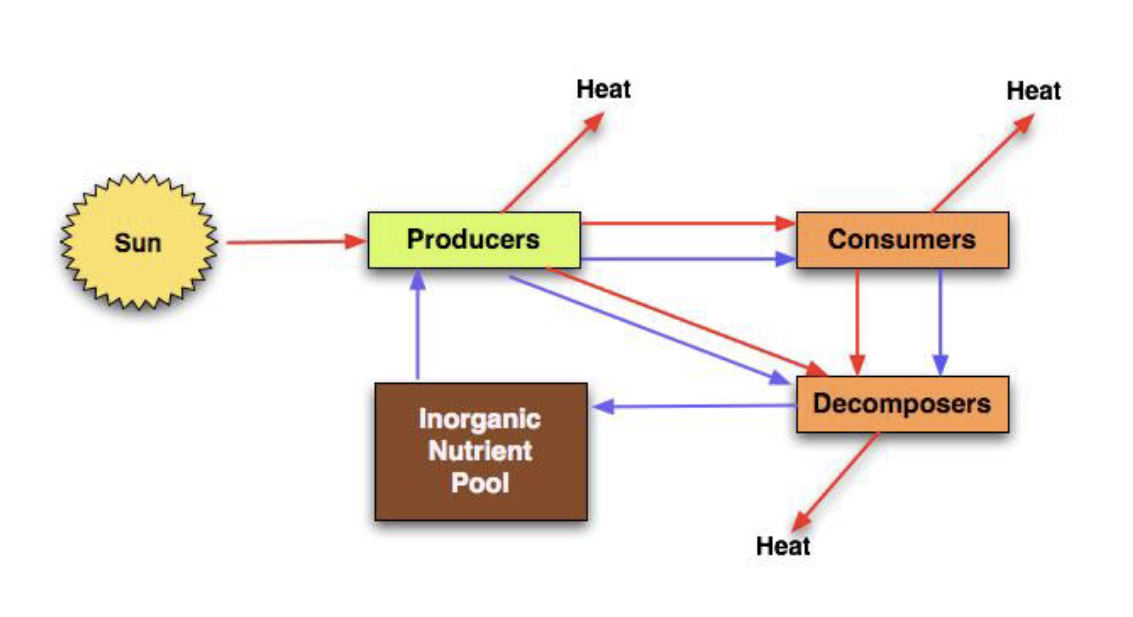
The flows in a system provides what?
Inputs and outs of energy and matter
Energy initially enters ecosystems from the sun as?
light
What’s the process of energy from sun converting to light?
Converted and stored as chemical potential energy
Organic molecules pass through down through chains
Respiration releases this energy
All energy enters an ecosystem, and lost again
How does matter cycles through an ecosystem?
Nitrogen is fixed by bacteria
Plants assimilate the nitrogen
Herbivores consume these plants and the nitrogen compounds pass through the food chain
Eventually the plants or animals will die and decomposers break down organic matter and return it to the soil
What does the forest ecosystem consist of?
Plants fix light via photosynthesis
air nitrogen is fixed by soil bacteria
Herbivores may graze in other ecosystems
Forest fires expose soil to erosion
What are the major global cycles?
Nitrogen cycle
Carbon cycle
Hydrological cycle
Major global cycles has what type system?
Closed system
What’s the first law of thermodynamics?
Energy is an isolated system that can be transformed by cannot be created nor destroyed.
How does ecosystems maintain themselves?
By cycling energy and nutrients obtained from external sources
What are the laws of energy in an ecosystem?
1st law of thermodynamics
2nd law of thermodynamics
What are the implications of the 1st law of thermodynamics?
In an open system (ecosystem), once energy has entered it will never increase. Energy has to keep entering to keep the ecosystem functioning.
In a food chain, energy transforms from light to chemical to heat energy. This increases entropy (second law) so there is less available to do work therefore at higher trophic levels there are fewer animals.
How can the principle of conservation of energy be modelled with?
By energy transformations along food chains and energy production systems.
How does energy production model the principle of conservation of energy?
Coal is burnt to alter the chemical bonds and release heat
The heat turns water from a liquid to a gas (steam)
The steam spins turbine (kinetic energy)
Drives an electrical generator to produce electricity (electrical energy)
How does food chains model the principle of conservation of energy?
Chemical energy passes along the food chain
As consumers eat producers or other consumers, some chemical energy is converted into mechanical energy during respiration so that it can be used to fuel life processes.
What’s an entropy?
A measure of the amount of disorder in a system
What does an increase in entropy arising from energy transformations cause?
it reduces the energy available to do work
What’s the second law of thermodynamics?
It states that the entropy of a system increases overtime.
Living systems require what?
It requires constant input of new energy from the sun
What’s efficiency?
Comparison of the amount of work or energy done to the amount of energy that it consumed.
What’s the formula of efficiency?
Useful outputs/ inputs x 100
Why is it more efficient to eat plants?
Because there is less energy loss
What are the implications of the 2nd law of thermodynamics?
Entropy will increase, so to keep a body together organisms must constantly put in energy (eg. food and sunlight).
Increase in entropy is reduced by an input of food as a source of energy. All living organisms respire and energy stops them disintegrating.
Energy is required at rest.
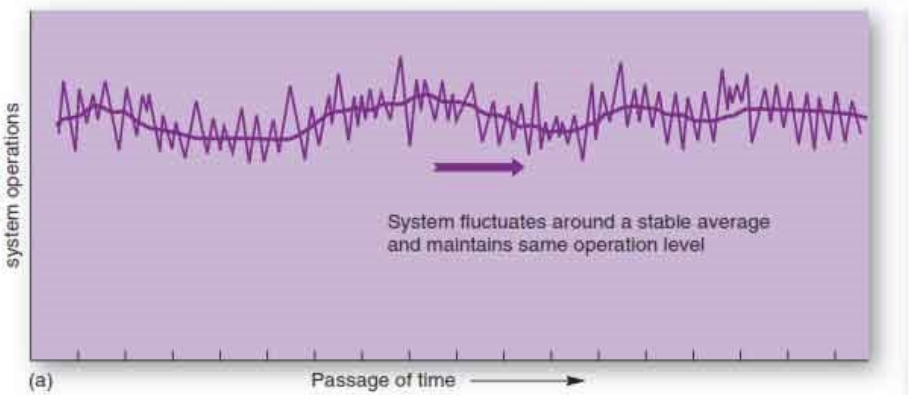
What’s a steady state equilibrium?
Maintains a stable system due to constant flow of inputs and outputs.
Ecological system requires inputs and output in order to function.
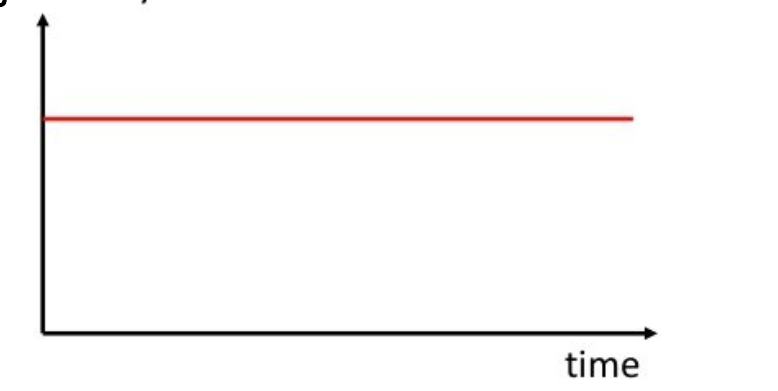
What’s static equilibrium?
It doesn’t apply to natural systems as there are no inputs or outputs so no change occurs.
Always in balance
Inanimate objects
What’s stable?
Returns to balance after disturbance (eg. rubber)
What’s unstable?
Achieves new balance after disturbance (eg. car crash)
Eco-systems are said to be?
“Self regulating”
What maintains a system in its equilibrium state?
Feedback mechanisms (positive and negative)
What’s negative feedback?
dampens effects and promotes return to stability
examples: predator prey relationships, and human body temperatures.
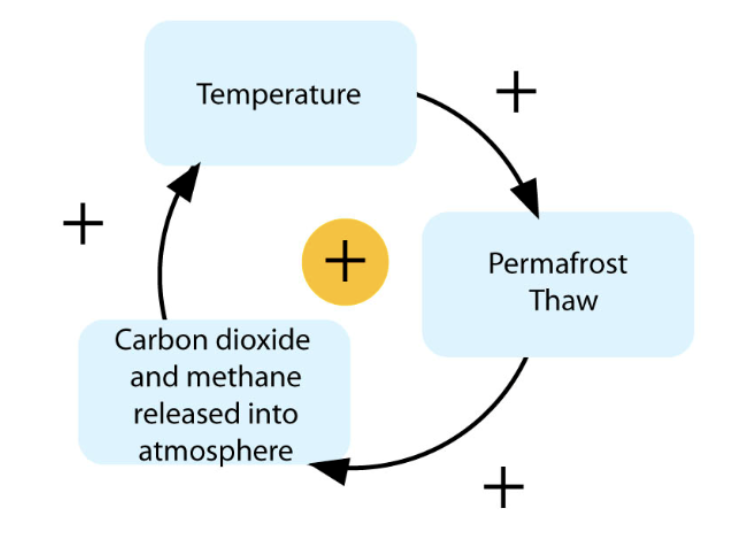
What’s positive feedback?
Amplifies change and leads to deviation from stability
Diverge from equilibrium
change in x causes change in u which causes a bigger change in x
What are the principles of negative feedback?
More complex, more feedback looks more resilient.
Absorb disturbance without shifting to an alternative state and losing function and services.
What are the examples of disturbance to the ecosystem?
Fires
Flooding
Pesticide
Deforestation
Windstorms
Insect population explosions
Fracking
What’s fracking?
Process of injecting liquid at high pressure into subterranean rocks, boreholes, etc. so as to force open existing fissures and extract oil or gas.
What’s a threshold?
Level, point, or value above which something is true or will take place and below which it is not or will not.
How can humans affect the resilience of systems?
Through reducing storages and diversity.
A small change within a global climate system can cause?
It can transform a relatively stable system to a very different state of the climate
What are tipping elements?
Its used to describe large scale components of the earth system which may be subject to tipping points.
Examples: ice sheets, el nino, amazon rain forest, and arctic sea ice.
What’s pollution?
Addition of a substance or an agent to an environment through human activity at a rate greater than that at which it can be rendered harmless by the environment and which has an appreciable effect on the organisms in the environment.
What are the classifications of pollution?
Matter (solids, liquid gases)
Organic (containing carbon) - sewage
Non-organic (plastics)
What are the sources of pollution?
Fossil fuels
Domestic waste
Industrial waste
Agricultural waste
How does fossil fuels cause pollution?
It releases greenhouse gases, and contributes to respiratory problems and acid rain.
How does domestic waste cause pollution?
Food waste, sewage, rubbish (glass, plastics, paper, wood, metals)
How does industrial waste cause pollution?
Heavy metals, heat (in air and/ or water), acids
How does agricultural waste cause pollution?
Fertilizers, animal waste, and pesticides contaminate water sources
Pollution may be?
non-point or point source and persistent or biodegradable, acute, or chronic.
What are examples of point source pollution?
Drainage pipe
Leaking storage tank
Factory chimney
What’s non-point source?
Pollution which cannot be tracked back to a single origin or source.
What are the examples of non-point source pollution?
Storm water runoff
Water runoff from urban areas
Failed septic systems
What are the regulations for non-point source pollution?
Its more challenging
Identify multiple sources
who is responsible
different legal jurisdictions
large-scale intervention
What’re Persistent Organic Pollutants (POPs)?
Resistant to environmental degradation through chemical, biological and photolytic processes.
What are the characteristics of Persistent Organic Pollutants (POPs)?
Can’t be broken down by living organisms
Passed along food chains as a result
Concentrations build with each higher tropic level resulting in biomagnification

What are examples of Persistent Organic Pollutants (POPs)?
Heavy metals
PCBs
Dioxin
DDT
What’s biodegradable?
Capable of being decomposed by bacteria or other living organisms. Does not build up in individuals or get passed along food chains.
What are examples of biodegradable pollutants?
Sewage
Food waste
Most modern pesticides
Degradable plastic bags
What’s acute?
Large amounts of pollutant released at one time.
Symptoms appear soon after short, intense exposure (eg. Bhopal Disaster 1984)
What’s chronic?
Long term release of small amount
Symptoms appear after long term, low level exposure.
What’s primary pollution?
first released directly from the source.